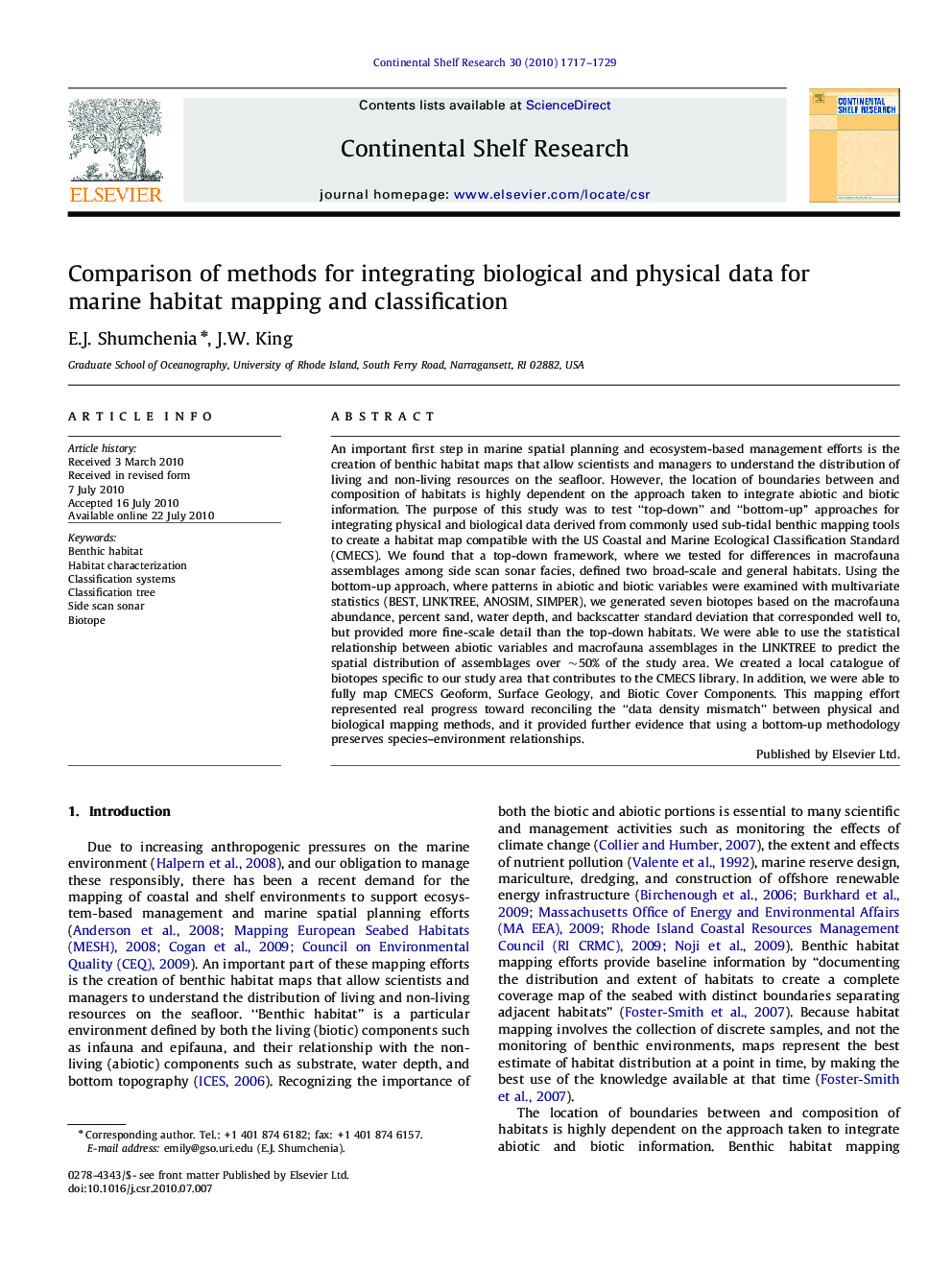| کد مقاله | کد نشریه | سال انتشار | مقاله انگلیسی | نسخه تمام متن |
|---|---|---|---|---|
| 4532924 | 1325157 | 2010 | 13 صفحه PDF | دانلود رایگان |

An important first step in marine spatial planning and ecosystem-based management efforts is the creation of benthic habitat maps that allow scientists and managers to understand the distribution of living and non-living resources on the seafloor. However, the location of boundaries between and composition of habitats is highly dependent on the approach taken to integrate abiotic and biotic information. The purpose of this study was to test “top-down” and “bottom-up” approaches for integrating physical and biological data derived from commonly used sub-tidal benthic mapping tools to create a habitat map compatible with the US Coastal and Marine Ecological Classification Standard (CMECS). We found that a top-down framework, where we tested for differences in macrofauna assemblages among side scan sonar facies, defined two broad-scale and general habitats. Using the bottom-up approach, where patterns in abiotic and biotic variables were examined with multivariate statistics (BEST, LINKTREE, ANOSIM, SIMPER), we generated seven biotopes based on the macrofauna abundance, percent sand, water depth, and backscatter standard deviation that corresponded well to, but provided more fine-scale detail than the top-down habitats. We were able to use the statistical relationship between abiotic variables and macrofauna assemblages in the LINKTREE to predict the spatial distribution of assemblages over ∼50% of the study area. We created a local catalogue of biotopes specific to our study area that contributes to the CMECS library. In addition, we were able to fully map CMECS Geoform, Surface Geology, and Biotic Cover Components. This mapping effort represented real progress toward reconciling the “data density mismatch” between physical and biological mapping methods, and it provided further evidence that using a bottom-up methodology preserves species–environment relationships.
Journal: Continental Shelf Research - Volume 30, Issue 16, 30 September 2010, Pages 1717–1729